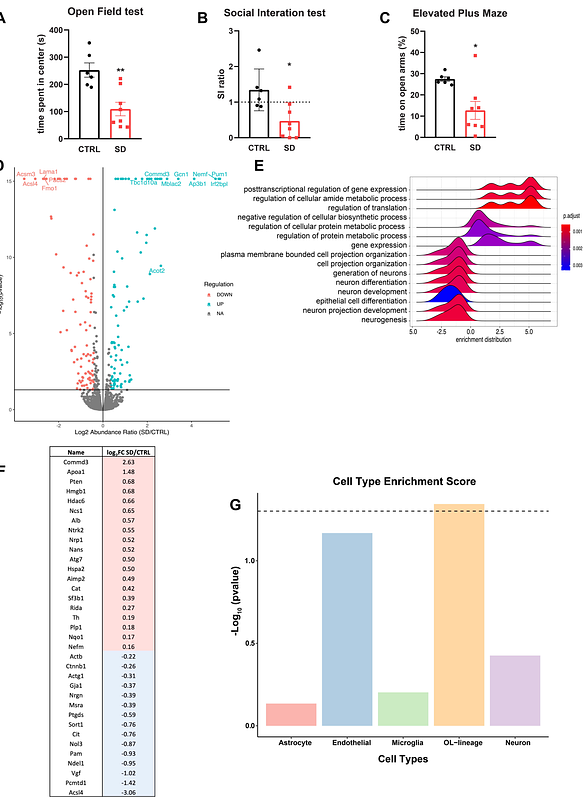Proteomic evidence of astrocytic dysfunction in the olfactory bulb of depressed suicides

Proteomic evidence of astrocytic dysfunction in the olfactory bulb of depressed suicides
Rahimian, R.; Perlman, K.; Fakhfouri, G.; Mpai, R.; Richard, V. R.; Hercher, C.; Penney, L.; Davoli, M. A.; Nagy, C.; Zahedi, R. P.; Borchers, C. H.; Giros, B.; Turecki, G.; Mechawar, N.
AbstractBrain regions involved in olfaction, including the olfactory bulb, have been implicated in the etiology of major depression mainly on the basis of rodent models of the illness. To explore more directly the molecular features of OB in major depression, a global comparative proteome analysis was carried out with human OB samples from 12 middle-aged male depressed suicides and 12 matched controls. Cases displayed a significant reduction in astrocytic proteins. Furthermore, using RNA-fluorescence in situ hybridization, we observed a decrease in the percentage of ALDH1L1 cells expressing canonical astrocytic markers including ALDOC, NFIA, GJA1 (connexin 43) and SLC1A3 (EAAT1). These results are consistent with previous reports of downregulated astrocytic marker expression in other brain regions in depressed suicides. We also conducted a comparative phosphoproteomic analysis of OB samples and found a dysregulation of proteins involved in neuronal and astrocytic functions. To determine whether OB astrocytic abnormalities can be observed in an animal model of depression, we also performed proteomics on the OB of socially defeated mice. Cell-type specific analysis revealed that in socially defeated animals, the most striking OB protein alterations were associated with oligodendrocyte-lineage cells rather than with astrocytes, highlighting an important species difference. Overall, this study further highlights cerebral astrocytic abnormalities as a consistent feature of depression and suicide in humans, and suggests that animal models of depression may not display all cellular and molecular features of depression, at least in the OB.